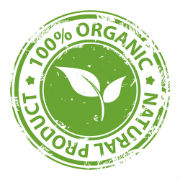 A recent hepatitis outbreak in USDA “certified-organic” frozen berry mix has people worrying and wondering what steps are being taken to ensure that organic food is safe. Unfortunately, not many.
A recent hepatitis outbreak in USDA “certified-organic” frozen berry mix has people worrying and wondering what steps are being taken to ensure that organic food is safe. Unfortunately, not many.
A remarkably similar case occurred in Germany three years ago. Forty-four people died and 3,700 fell ill after eating E. coli-contaminated certified-organic bean sprouts. Hundreds of survivors will require kidney dialysis the rest of their lives. The cause was never definitively determined, although a nearby cattle operation was suspected of contaminating water used to sprout the organic sprouts.
All this raises critical questions. What measures were taken to ensure that water used on this organic sprouting operation was safe? Was there any testing? Is there any organic field testing now in response to that German tragedy? What about numerous other outbreaks in certified-organic food – like outbreaks of listeria, E. coli and salmonella in organic spinach for instance?
Have such incidents provided incentives for organic industry leaders to recognize the need to test crops in the field, to ensure that they’re safe? Have they prodded government safety inspectors to require such tests? Are organic crops already tested to ensure that these kinds of things don’t happen again?
Sadly, the answer to all these questions is no or nothing. Instead, with steady media help, incidents that should spur the organic industry to take action invariably become mere bumps along the road toward expanding a food system that organic promoters hope will eventually replace conventional farming.
Meanwhile, the organic industry and news media promote regular stories about speculative (and even ludicrous) claims that genetically-modified (GM) crops might pose risks to human health. Recent articles about minute traces of GM wheat getting into a Japan-bound shipment represent just one example.
Reuters and Washington Post stories might make you think people in Japan had died from consuming this wheat, or at least fell ill. But no one did. Nor did anyone even get a headache when minute traces of unregistered GM flax got into Canadian shipments to Europe. And yet, Europe closed its market to all flax shipments from Canada in response to finding as little as one GM seed in a million.
In fact, no one has ever gotten sick from GM foods. And yet, when consumers get seriously sick or even die from eating certified-organic food, both the outbreaks and their probable causes are largely ignored.
Every “mainstream” media outlet is reporting that hepatitis might have gotten into certified-organic berries due to a person-to-person cause; perhaps a field or production line employee with hepatitis didn’t wash his hands. But then why wasn’t this person found? With 131 people infected (and 59 hospitalized) across eight states, how could one person possibly cause so much harm?
Far more likely is the feces-to-person route – which is exactly what analysts are finally saying. When thousands of pounds of improperly-composted manure are spread on a field, thousands of pounds of crops get contaminated. If not by animal feces, how about human? Organic farmers in many developing countries – such as Turkey, the apparent origin of this outbreak – still use raw human sewage to fertilize crops! In many people’s opinion, that practice qualifies as “organic” – whereas using safe modern fertilizers and insecticides does not! Even worse, feces contamination cannot be washed off. It’s embedded in the plant.
Moreover, in any modern nation, a person known to have hepatitis is not even allowed to work near food. This makes it even more likely that this contamination resulted from improperly-composted feces – and that the US Agriculture Department’s “organic-certification” system failed again, for lack of field testing.
And yet, organic activists continue to attack modern agriculture, while demanding that the organic industry get what many consider a “free pass.” After a quarter century on the market and trillions of servings containing biotech products, GM crops are still vilified for posing some sort of risk to human health – even as known risks from natural pathogens on organic crops are routinely brushed aside, even when they cause hepatitis, listeria, E. coli, salmonella, deaths and lifelong health problems.
Most people are shocked that record-keeping, record-checking, and “certified as organic are” all that “ensures” feces don’t get into organic food. Meanwhile, safe synthetic ammonium nitrate is banned in organic production, forcing organic farmers to rely on composted manure. Of course, manure is safe too, as long as it’s composted properly. But when it isn’t, people get sick or even die.
“Organic” with manure is how we farmed for millennia, before the brilliant German scientist Fritz Haber discovered in 1917 how to extract limitless nitrogen from the Earth’s atmosphere to make nitrate, the key ingredient in fertilizers that spur plant root, stem and food growth. However, organic farming tautology rejects ammonium nitrate fertilizer and insists on old-fashioned manure.
This was a minor problem when the organic movement consisted of a few Berkeley drop-outs who ran communal farms. But with sales in the billions of dollars annually, the global organic-industrial-complex must take steps to ensure that improperly composted fecal matter (animal or human) does not get into our food chain. Instead, there is a complete absence of field testing and other true safety measures.
It’s ironic that environmentalists think everything “industrial” should be thoroughly, routinely and repeatedly tested, including in the modern agricultural sector. But when their preferred “organic” food production system is involved, they want us to rely on the proverbial wing and a prayer. There’s no need to test organic crops, to ensure they’re safe, since they’re “certified” organic – say those who promote or profit from this multibillion-dollar business.
I grew up on an organic farm, worked as an organic inspector, wrote a book on how to improve the organic industry, by making it less political and more scientific, and have given countless lectures promoting science-based organic food production. Unlike critics who attack the industry, I still support the philosophy of organic food production. However, I believe fervently that organic crops should always be tested before going to market – before leaving farmers’ fields, in fact, since that’s where the USDA’s highly lucrative organic label is officially applied. That is the only way to prevent food-borne illnesses.
Yes, finally, there are plans to begin testing some organic crops under the USDA’s National Organic Program – but only some. Due to industry pressure, a recently rewritten standard on organic testing will apply only to a small fraction of farms (less than 5%) and rarely, if ever, to foreign farms that make up the vast majority of the $33-billion in organic crops that the USDA certifies every year. Considering that the recent organic hepatitis outbreak has now been traced to Turkey, this new organic testing initiative will likely do nothing to prevent future problems.
Organic field testing must be implemented immediately, on all organic farms, every day, wherever the USDA’s good name is applied to organic food. This would likely cost about one-tenth what the current paper-based system costs. It’s been more than ten years since the USDA took control of the American organic industry. What are officials waiting for? Yet another fecal-borne outbreak?
Meanwhile, anyone purchasing organic fruits and vegetables should soak them several minutes in a solution of one part vinegar to three parts water, to kill bacteria that may be present due to improperly composted human or animal manure. Anyone buying frozen organic berries should boil or irradiate them. Failure to do so could result in severe illness or even death.
Indeed, warning labels to this effect should be required on all organic products. As organic activists argue, when they demand labels on GMO products, people have a right to know that the foods they eat are safe – and a right to know how to ensure that potentially dangerous foods can be made safe to eat.
- The Most Progressive Budget in Virginia’s History - December 21, 2019
- When is a Clean Water Act Permit Needed? - December 21, 2019
- Should U.S. Consider Modern Monetary Theory to Improve Economy? - December 21, 2019

